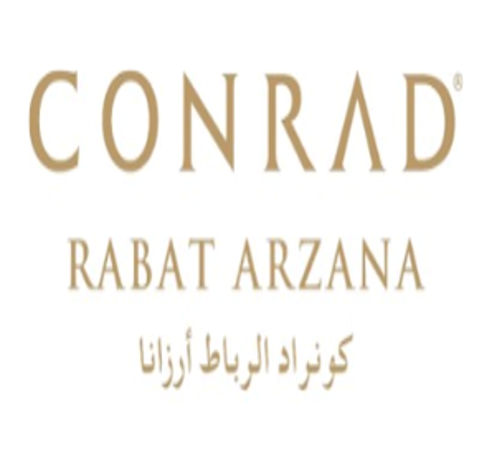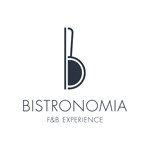Title Page
-
Site conducted
-
Conducted on
-
Prepared by
-
Location
2024 Focus Checklist Questions
Back-Of-House Cooking & Prep
-
Confirm there is at least one functional food thermometer available in the preparation and cooking area.<br><br>
-
Confirm the internal temperatures of cold TCS foods in storage, production and holding is at or below 41°F or lower in the preparation and cooking area.<br><br><br>
-
Confirm (by taking an internal temperature, or verifying on cooking logs) the FINAL cooking temperatures of TCS foods in the preparation and cooking area.<br><br><br>
-
"Confirm hot TCS foods in the preparation and cooking area that just have been prepared for later use are being cooled using proper cooling method. <br>"<br><br><br><br>
-
Observe food production activities to confirm any disposable production items are immediately disposed of. Disposable production items include: twist ties, rubber bands, wrappings (plastic, foil, paper), bread or meat clips, produce or date mark stickers, tamper seals, etc.<br><br>
-
Inspect food processing equipment and confirm it is in good condition, with no breaks, loose parts, or other hazards. Objects to inspect should include: blades (knives, slicers, can openers), equipment with screws (large processing equipment, hoods, equipment with handles and lids), etc.<br><br><br><br><br>
-
Inspect the facility walls and ceilings in food areas and confirm the areas are free from potential hazards such as staples, thumb tacks, and cracking/crumbling walls or ceiling tiles.<br><br><br>
-
Observe all exposed (unpackaged) ready-to-eat (RTE) food in the preparation and cooking area for contamination risks.<br><br><br><br><br>
-
Observe the area where produce is washed within the preparation and cooking area and confirm associates understand how to properly wash, sort and inspect produce for insects, rocks and other foreign objects.<br><br><br><br><br><br><br><br><br>
-
Confirm associates who handle food do not have something on their person or uniform that could become a hazard. Hair should be restrained, no artificial or painted nails, no jewelry, no artificial eye lashes, no pins attached to uniform, etc.<br><br><br><br><br>
-
Inspect all PPE currently worn and in use by associates in preparation and cooking area.<br><br><br><br><br><br><br><br>
-
Observe all employees, guests and visitors for slip-resistant shoes or shoe covers in preparation and cooking area.<br><br><br><br>
-
Confirm floor mats are being utilized in all high-risk preparation and cooking areas where permanent anti-slip floors are not installed - AND - that they are Mighty Mats, or SR Max Mats brand.<br><br><br>
-
Inspect all PPE that is NOT currently in use in the preparation and cooking area to ensure that it is in good and safe condition.<br><br><br><br>
-
Inspect all unattended knives/blades in preparation and cooking area to ensure that they are properly stored and not sitting on tables/cutting boards.<br><br>
-
Observe all areas of the preparation and cooking area for signs of pest activity.<br><br><br><br><br><br>
-
Review all signs and logs in the preparation and cooking area.<br><br><br><br><br><br>
Front-Of-House & Servery
-
Confirm there is at least one functional food thermometer available for use in the FOH/Servery area.<br><br>
-
Confirm (by taking an internal temperature, or verifying on cooking logs) the FINAL cooking temperatures of TCS foods in the FOH/Servery area.<br><br><br>
-
Confirm the internal temperatures of hot TCS foods in each hot holding unit in the FOH/Servery area is at or above 135°F.<br><br><br><br>
-
Confirm the internal temperatures of cold TCS foods in storage, production and holding is at or below 41°F or lower in the FOH/Servery area.<br><br><br><br>
-
Where foods are held under Time as a Public Health control in the FOH/Servery area, confirm all components of the program are available and maintained.<br><br><br><br><br><br><br>
-
Inspect equipment, and wares/objects made of glass, ceremic and plastic such as dish ware, storage containers, display containers, spatulas, utensils, etc. and confirm they are in good condition with no chips, breaks, warping or other physical hazards.<br><br><br><br><br><br>
-
Observe food production activities to confirm any disposable production items are immediately disposed of. Disposable production items include: twist ties, rubber bands, wrappings (plastic, foil, paper), bread or meat clips, produce or date mark stickers, tamper seals, etc.<br><br>
-
Observe all exposed (unpackaged) ready-to-eat (RTE) food in the FOH/Servery area for contamination risks.<br><br><br><br><br><br>
-
Observe each hand washing station in the FOH/Servery for proper stock and maintenance.<br><br><br><br><br><br><br>
-
Test each quat sanitizer bucket in the FOH/Servery area.<br><br><br><br><br>
-
Observe all areas of the FOH/Servery area for signs of pest activity.<br><br><br><br><br><br>
-
Confirm that foods on display for customer self-service are appropriately labeled, within expiration, and protected from contamination.<br><br><br><br><br><br>
-
Review all signs and logs in the FOH/Servery area.<br><br><br><br><br>
-
Inspect all PPE currently worn and in use by associates in FOH/Servery area.<br><br><br><br><br><br><br><br>
-
Observe all employees, guests and visitors for slip-resistant shoes or shoe covers in FOH/Servery area.<br><br><br><br>
-
Inspect all PPE that is NOT currently in use in the FOH/Servery area to ensure that it is in good and safe condition.<br><br><br><br>
-
Confirm floor mats are being utilized in all high-risk FOH/Servery areas where permanent anti-slip floors are not installed - AND - that they are Mighty Mats or SR Max Mats brand.<br><br><br>
-
Inspect all unattended knives/blades in FOH/Servery area to ensure that they are properly stored and not sitting on tables/cutting boards.<br><br>
Dish and Ware Washing Area
-
Confirm the hot water sanitizing dish machine is clean, equipped with detergent and that it reaches a minimum of 160°F upon the final rinse.<br><br><br><br><br><br><br>
-
Confirm the low temperature dish machine is clean, supplied with the appropriate chemicals, and that the sanitizer concentration is between 50-100ppm Chlorine solution.<br><br><br><br><br><br><br><br>
-
Confirm the ware wash sink(s) are clean, supplied with the appropriate chemicals, and that the sanitizer concentration is between 200-400ppm quat solution.<br><br><br><br><br><br><br>
-
Confirm the hot water coming from the ware wash sink faucet reaches a minimum of 110°F (120°F to be compliant with health dept standards in CA).<br><br>
-
Confirm floor mats are being utilized in dish room/ware wash areas and that they are Mighty Mats, or SR Max Mats brand.<br><br><br>
-
Confirm that any employee personal items, beverages or food in the dish room/ware wash area are only in designated areas.<br><br>
-
Observe each hand washing station in the dish room/ware washing areas for proper stock and maintenance.<br><br><br><br><br><br><br>
-
Observe all areas of the dish room/ware wash areas for signs of pest activity.<br><br><br><br><br><br>
-
Inspect wares and objects made of glass, ceremic and plastic such as dish ware, storage containers, display containers, cooling wands, spatulas, utensils, etc. and confirm they are in good condition with no chips, breaks, warping or other physical hazards.<br><br><br><br>
-
Inspect areas around the ware wash sink and dish machine and confirm there are no steel wool/metal scrub pads or wire brushes present.<br><br><br>
-
Observe the actions of associates in the dish machine/ware wash area to confirm they are cleaning and handling wares appropriately.<br><br><br><br><br>
-
Confirm all associates actively working in the dish room/ware washing sink are utilizing the required PPE.<br><br><br><br>
-
Review all logs used in the dish room/ware wash areas.<br><br><br>
Walk-In Coolers & Freezers
-
Confirm ambient temperatures of each walk-in cooler is at or below 41°F.<br><br>
-
Observe walk-in coolers and freezers for operational safety standards.<br><br><br><br><br><br><br><br>
-
Confirm the internal temperature of foods cooled by the unit is 41°F or less. Take internal temperature of foods that have been cooled for at least 6 hours.<br><br><br>
-
Observe all unit-prepared TCS foods, and opened commercially prepared foods, for date marking and expiration.<br><br><br>
-
Observe all exposed (unpackaged) ready-to-eat (RTE) food in walk-in coolers and freezers for contamination risks.<br><br><br><br><br><br>
-
Confirm that any employee personal item(s), beverages or food in walk-in coolers and freezers are only in designated (segregated) areas.<br><br>
-
Inspect containers in the walk-in that are made of glass, ceremic and plastic such as storage containers, display containers, cooling wands, etc. and confirm they are in good condition with no chips, breaks, warping or other physical hazards.<br><br><br>
-
Review all signs and logs for walk-in coolers and freezers.<br><br><br><br><br><br><br>
Dry Storage & Chemical Storage
-
Confirm that there is a stock of sanitizer available for both the ware wash sink as well as any low temperature dish machines.<br><br>
-
Observe food product packaging for damage and any segregated area for recalled items.<br><br><br>
-
Inspect containers in storage are made of glass, ceremic and plastic such as storage containers, display containers, cooling wands, etc. and confirm they are in good condition with no chips, breaks, warping or other physical hazards.<br><br><br>
-
Observe all foods for labeling and expiration.<br><br><br>
-
Confirm that any employee personal items, beverages or food in the dry storage area are only in designated areas.<br><br>
-
Observe dry storage areas for operational safety standards. <br><br><br><br><br>
-
Inspect all carts available for use.<br><br><br><br><br>
-
Inspect each step ladders available for use in the unit.<br><br><br><br><br>
-
Observe the area for signs of pest activity.<br><br><br><br><br><br>
-
Confirm chemicals are stored away from food, food packaging and food contact surfaces.<br><br><br>
-
Review the SDS binder and flammable item safety program.<br><br><br><br>
-
Review all signs in the back-of-house.<br><br><br><br>
Business Compliance & Receiving
-
Confirm the unit holds a CURRENT permit by the applicable regulatory authority and that any critical violations on the last health inspection have been corrected.<br><br><br><br>
-
Confirm the unit has at least one Certified Food Manager assigned, and that they current with their certifications.<br><br>
-
Confirm the unit has at least one Ingredient Expert assigned, and that they are current with their certifications.<br><br>
-
Confirm there is at least one functional food thermometer available for use during receiving.<br><br>
-
Confirm associates are following the proper receiving process.<br><br><br><br><br>
-
Confirm foods received by the unit are from an approved source, are not on the Compass Group Red List, and fish intended to be served raw is confirmed to be sushi-grade only.<br><br><br><br>
-
Confirm that any employee personal items, beverages or food in the receiving area are only in designated areas.<br><br>
-
Observe all areas of the receiving area, including loading dock, for signs of pest activity or pest entry points.<br><br><br><br><br><br><br><br>
-
Inspect each emergency eye wash station.<br><br><br><br><br><br>
-
Is all RECEIVING signage posted where required?<br><br><br>








